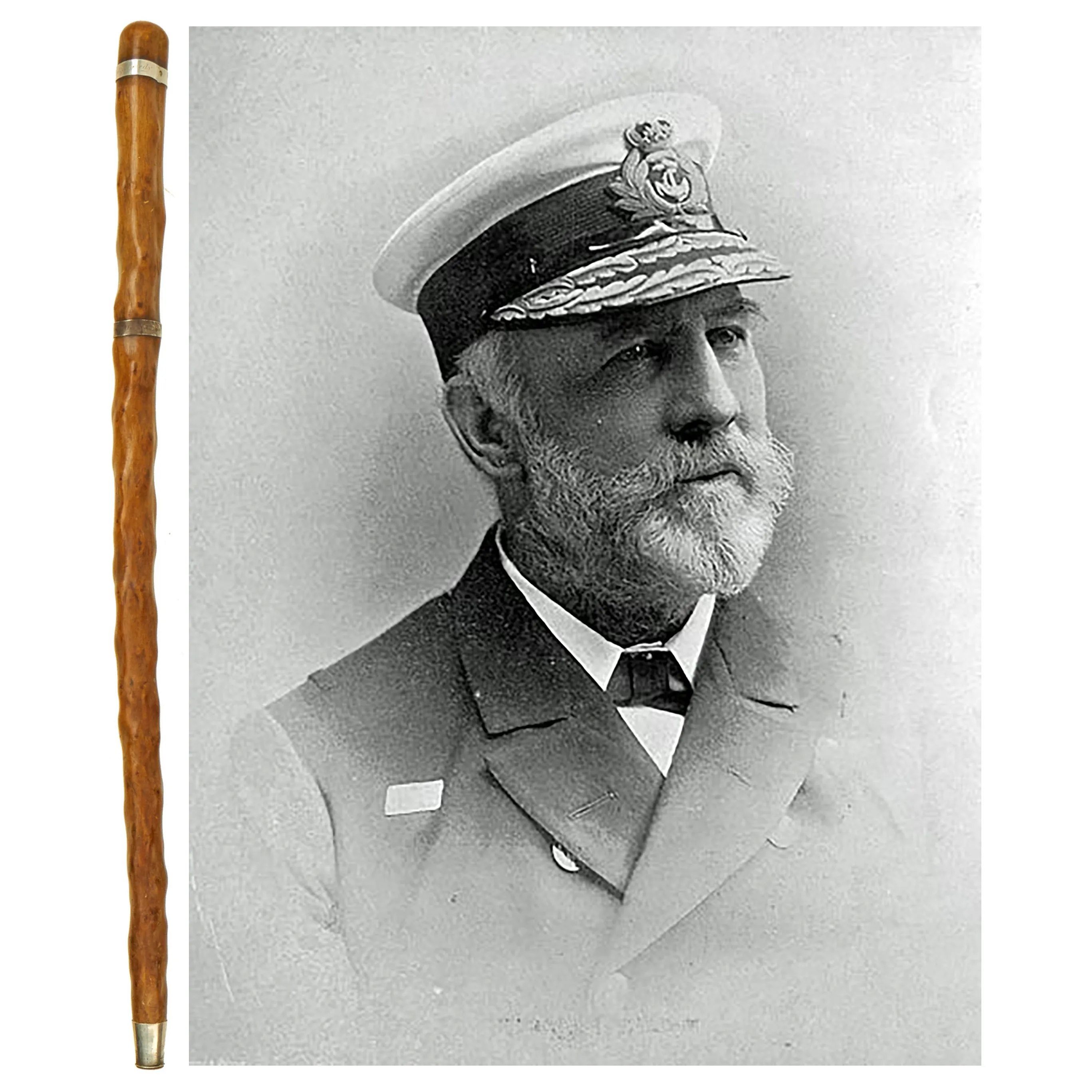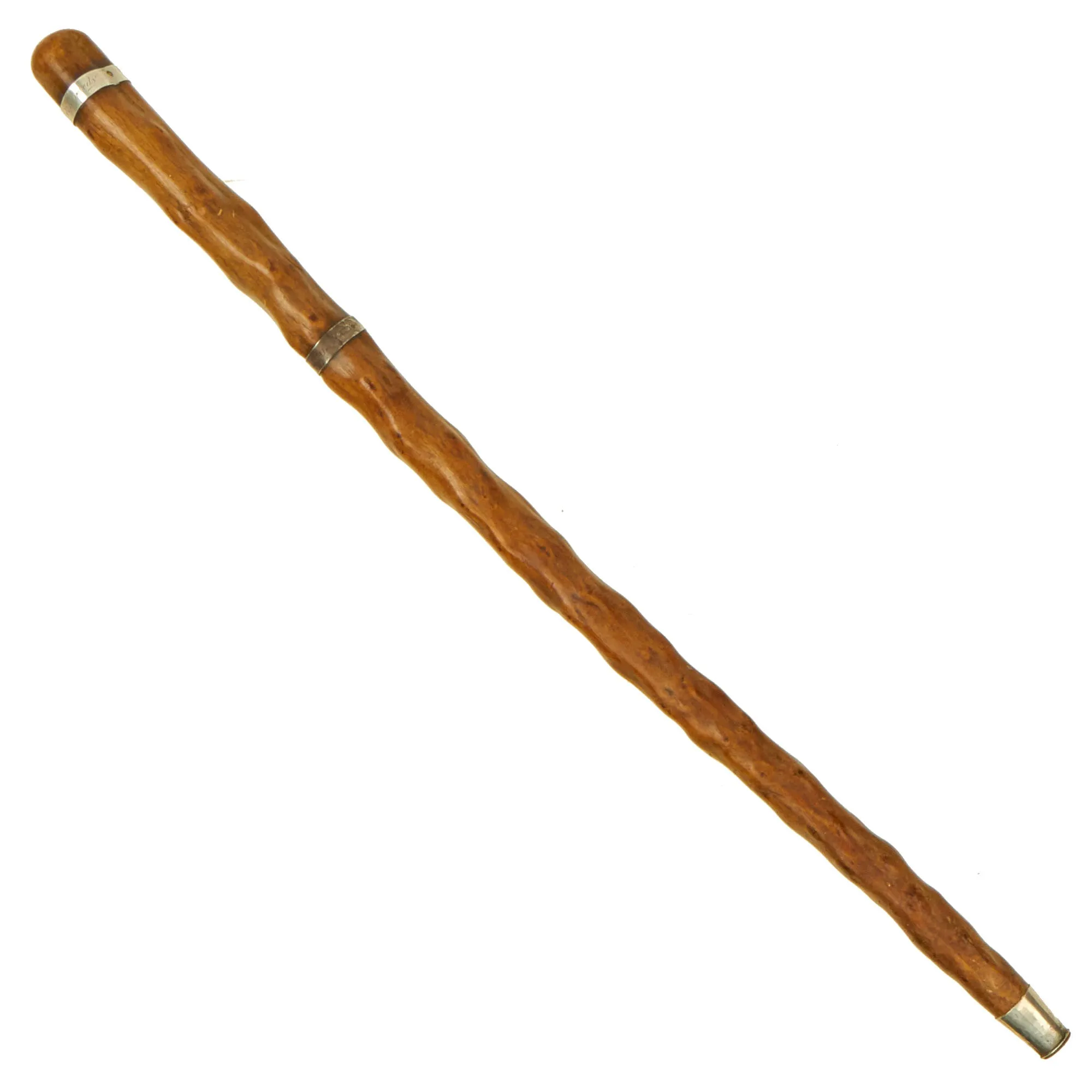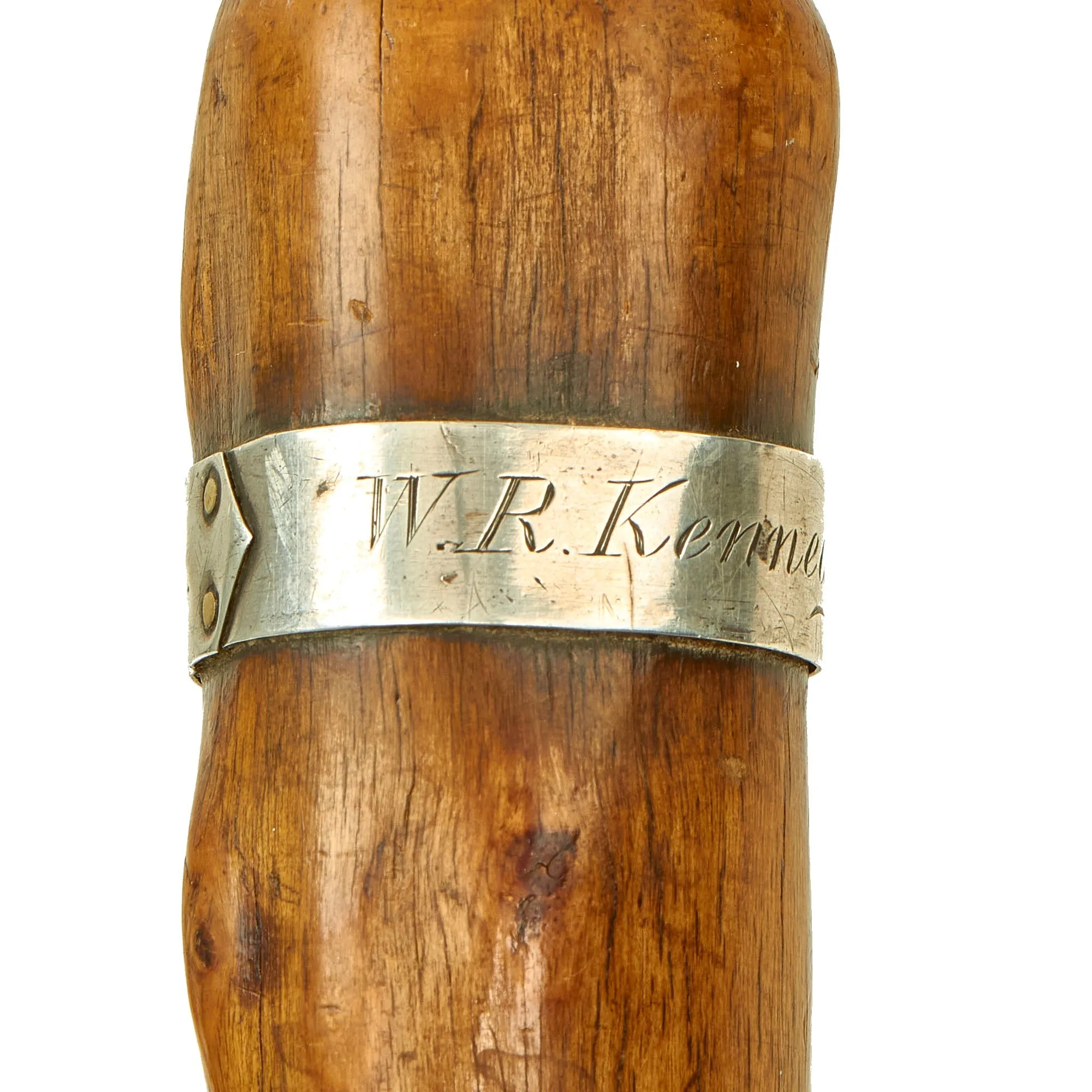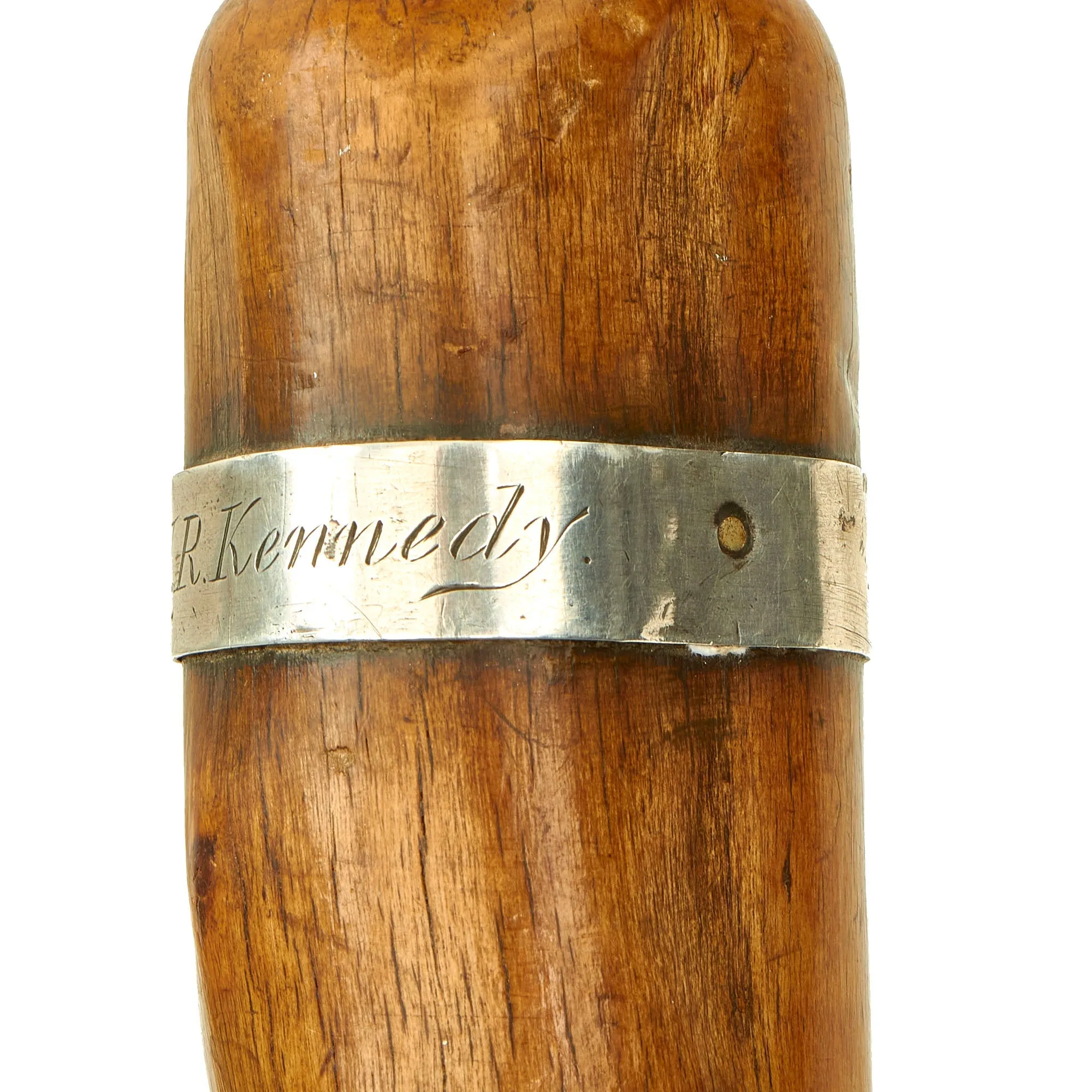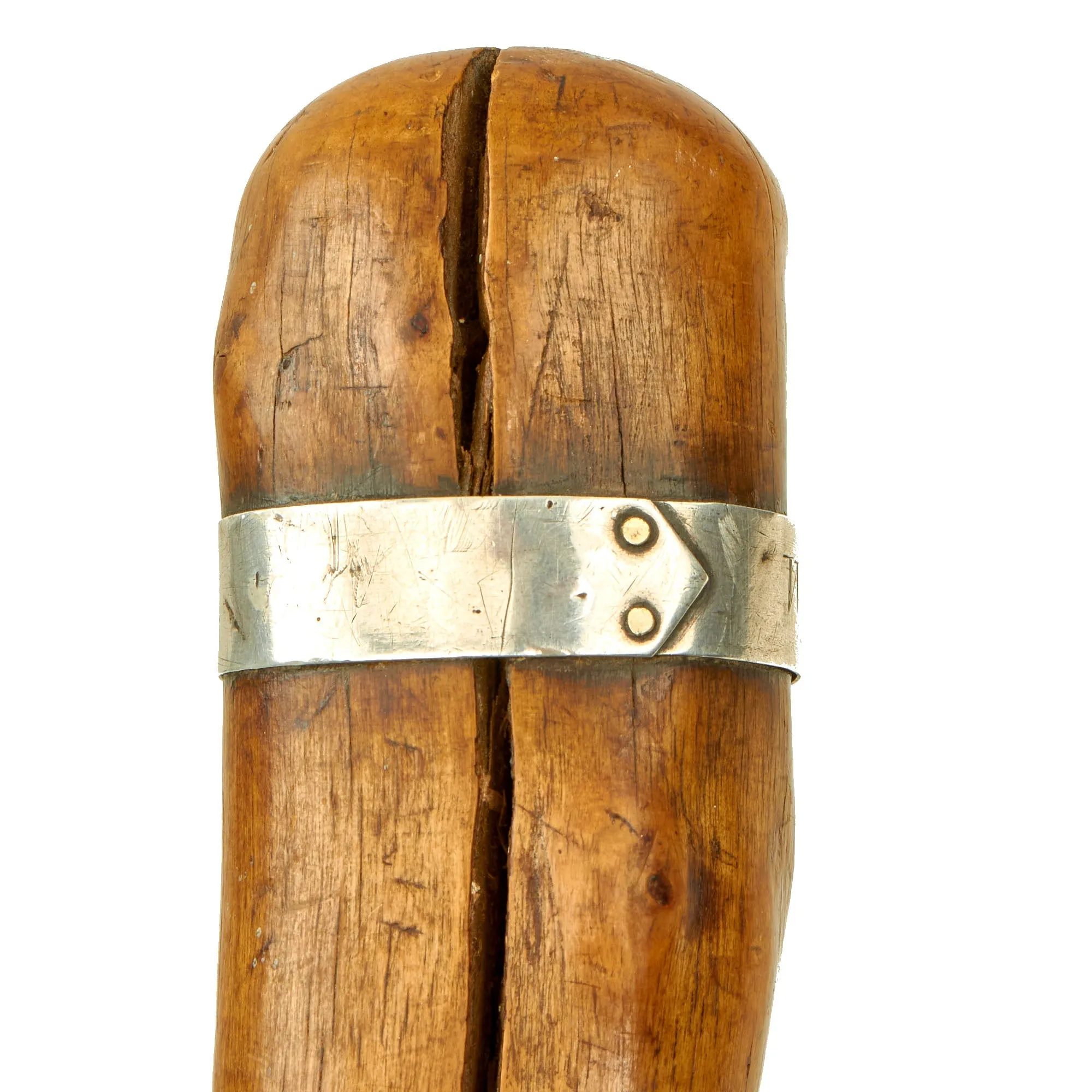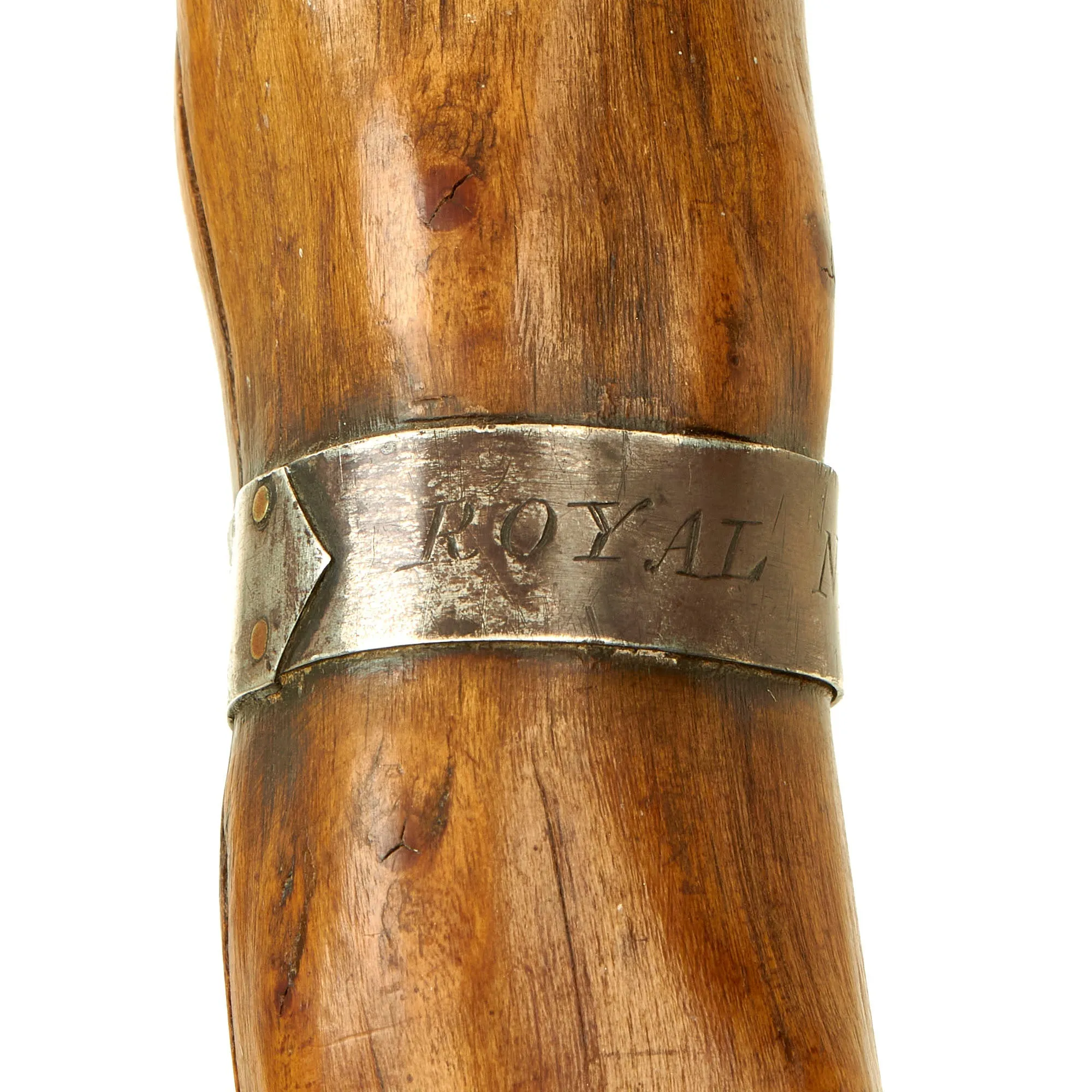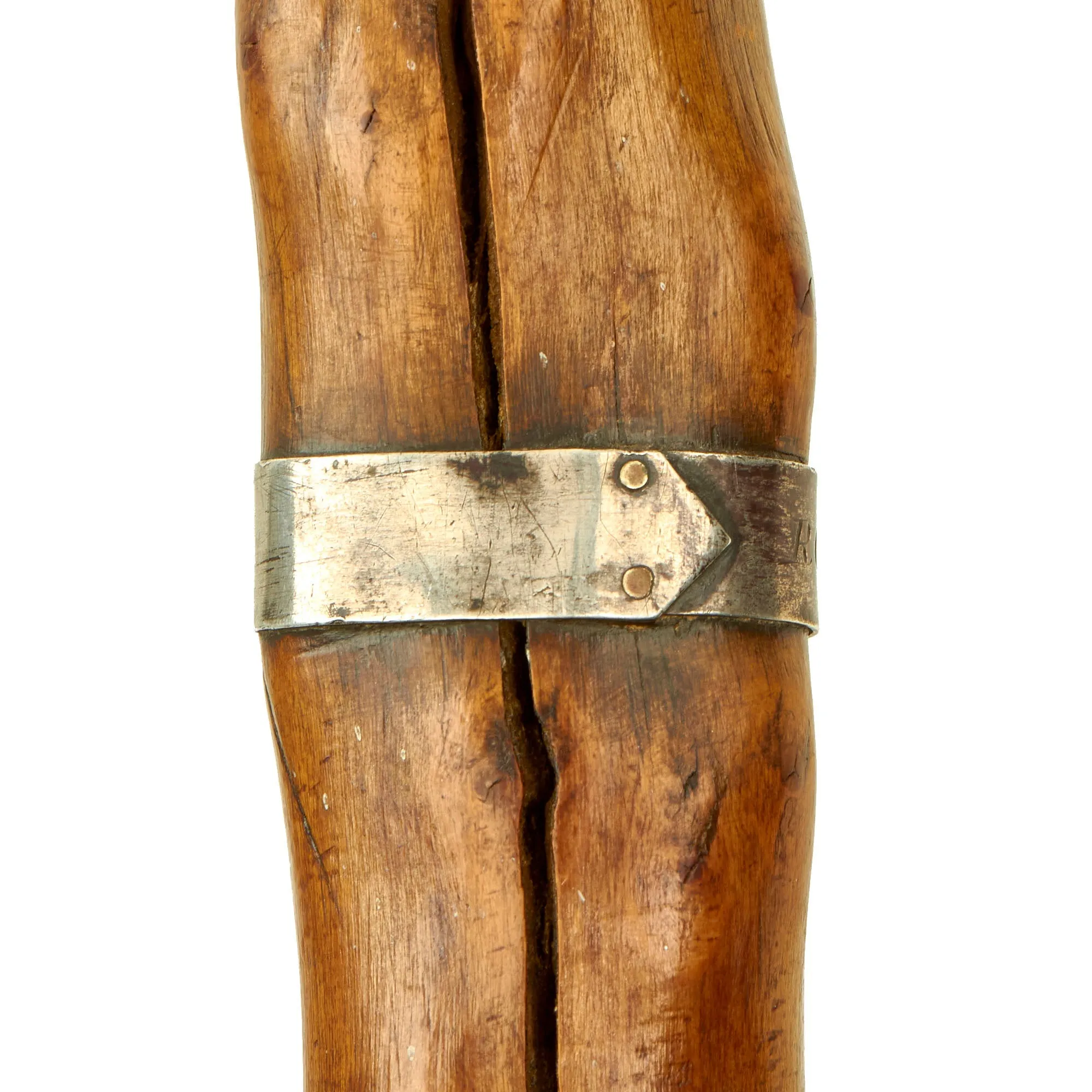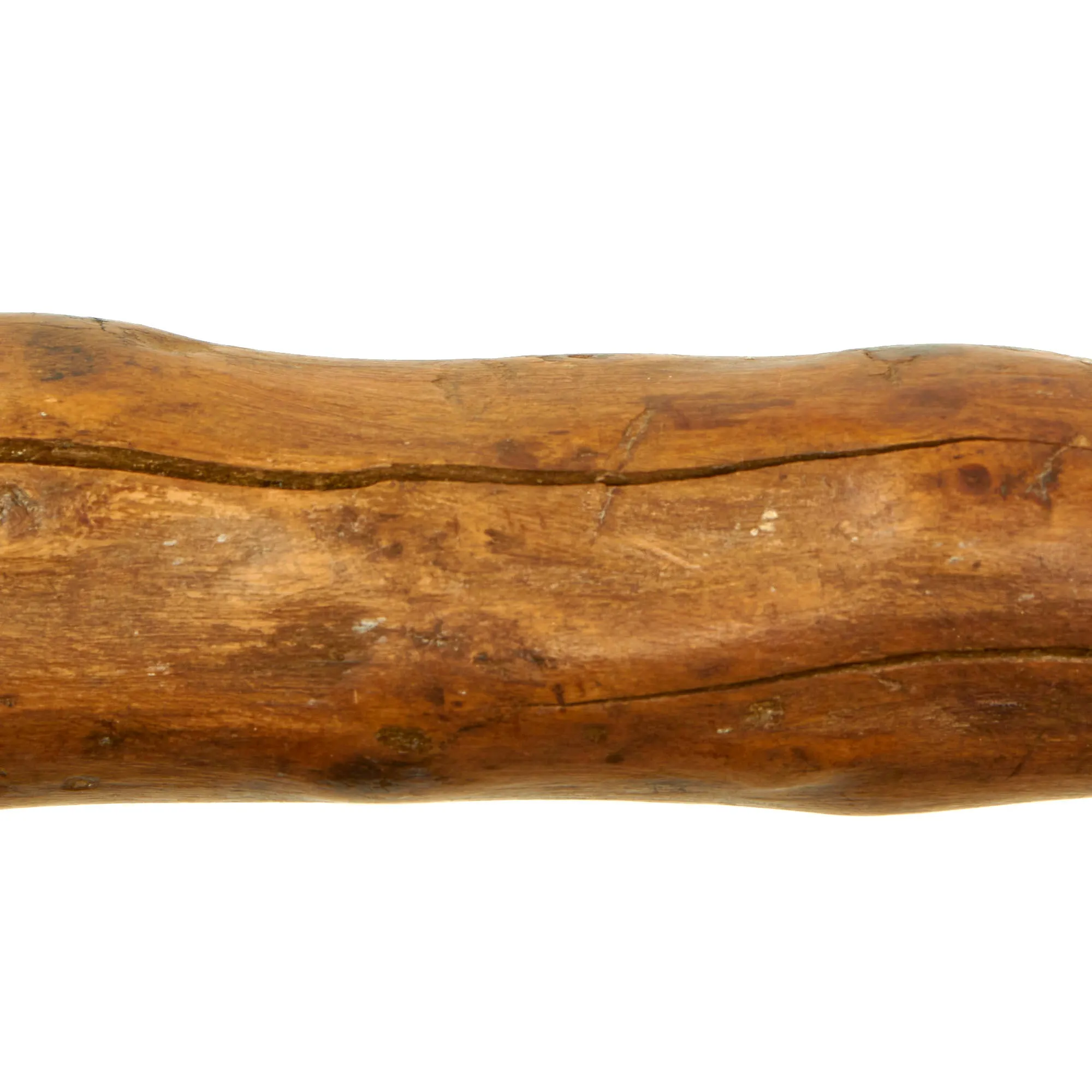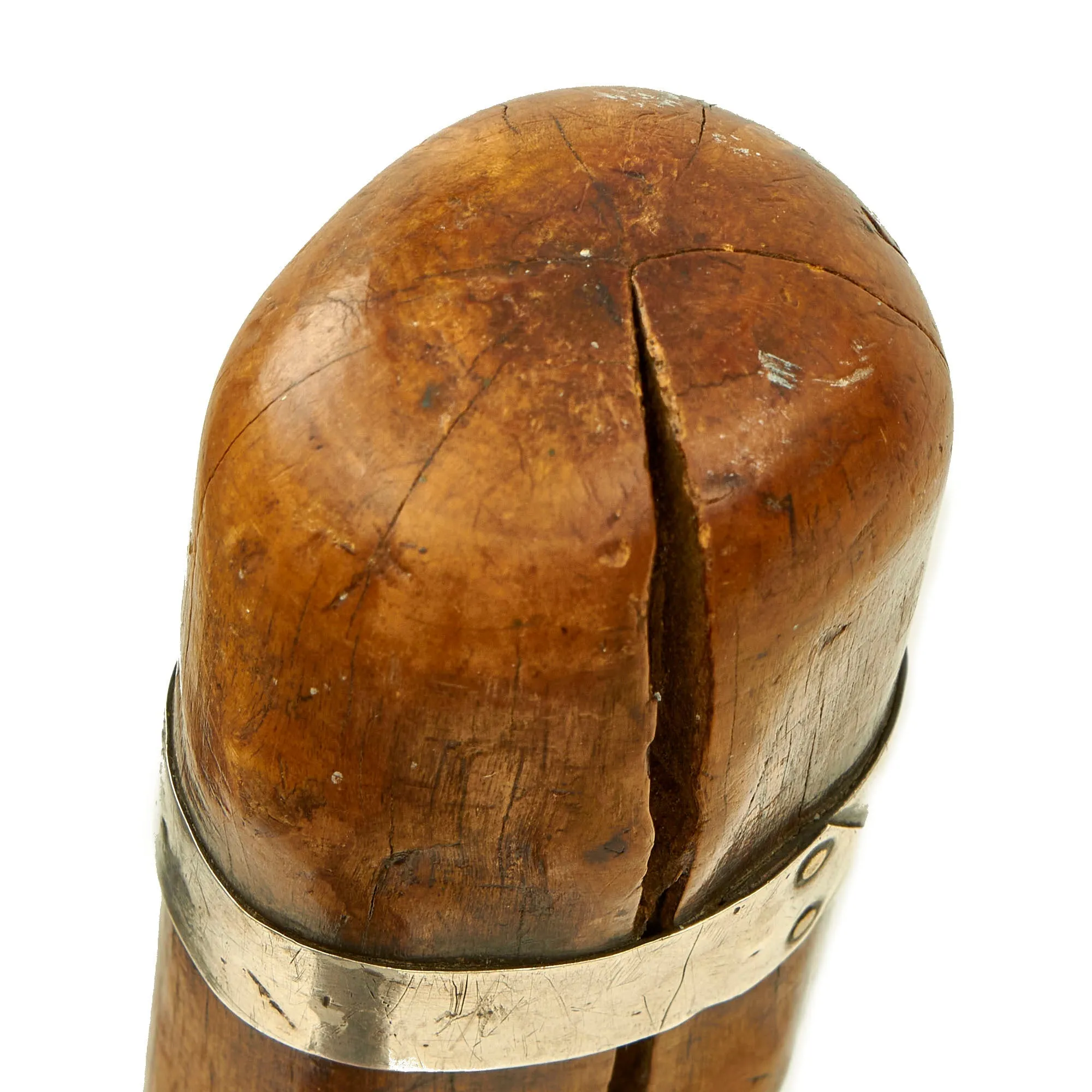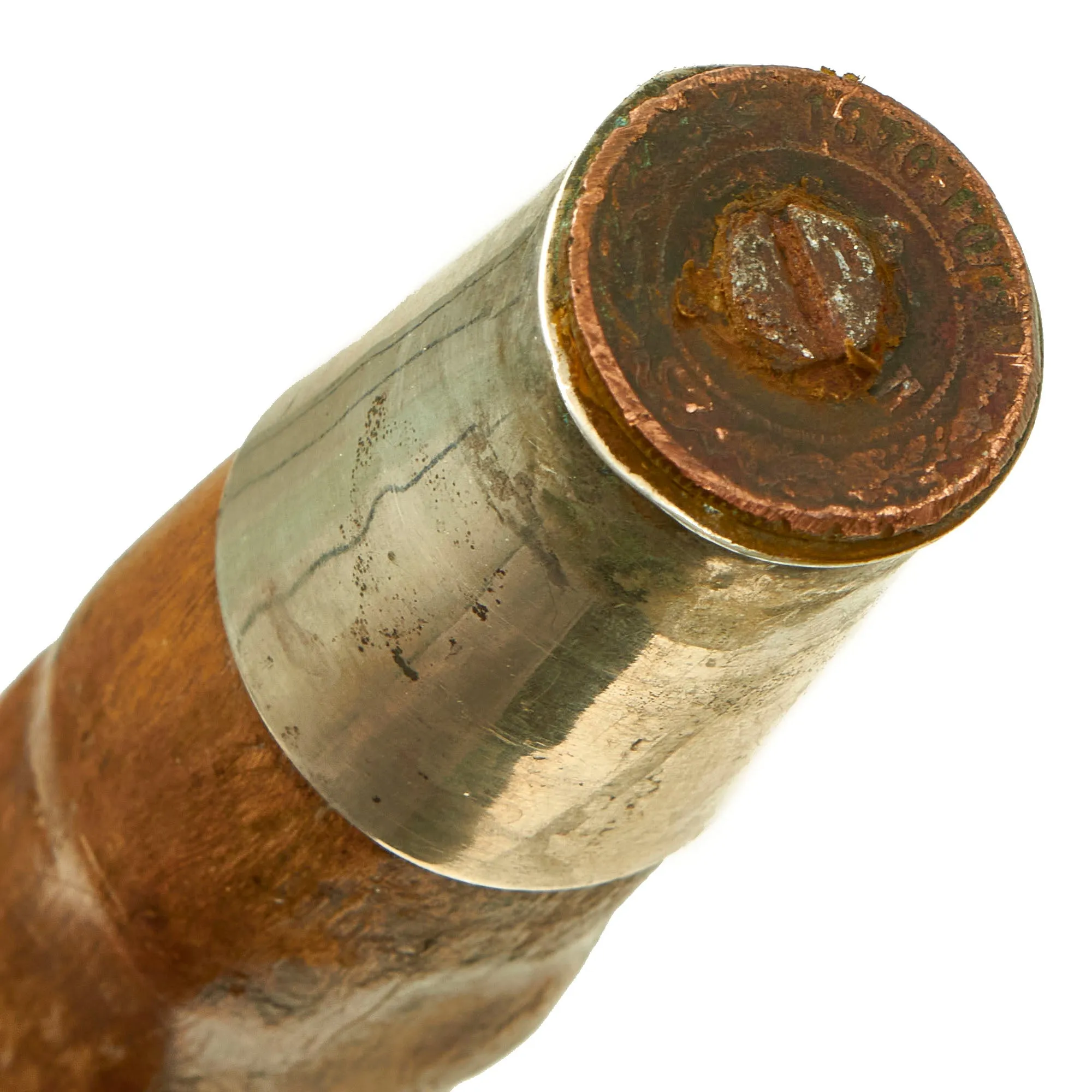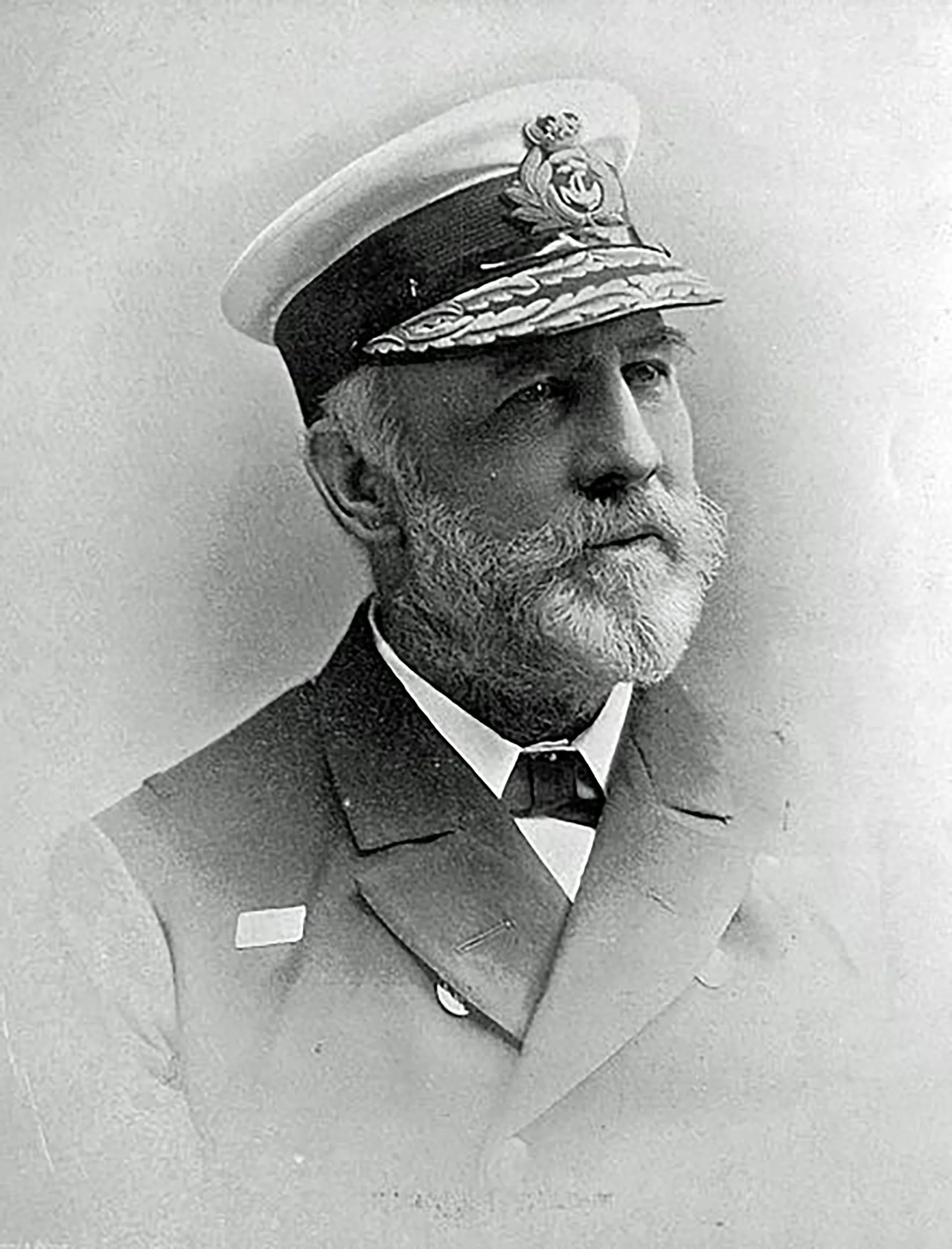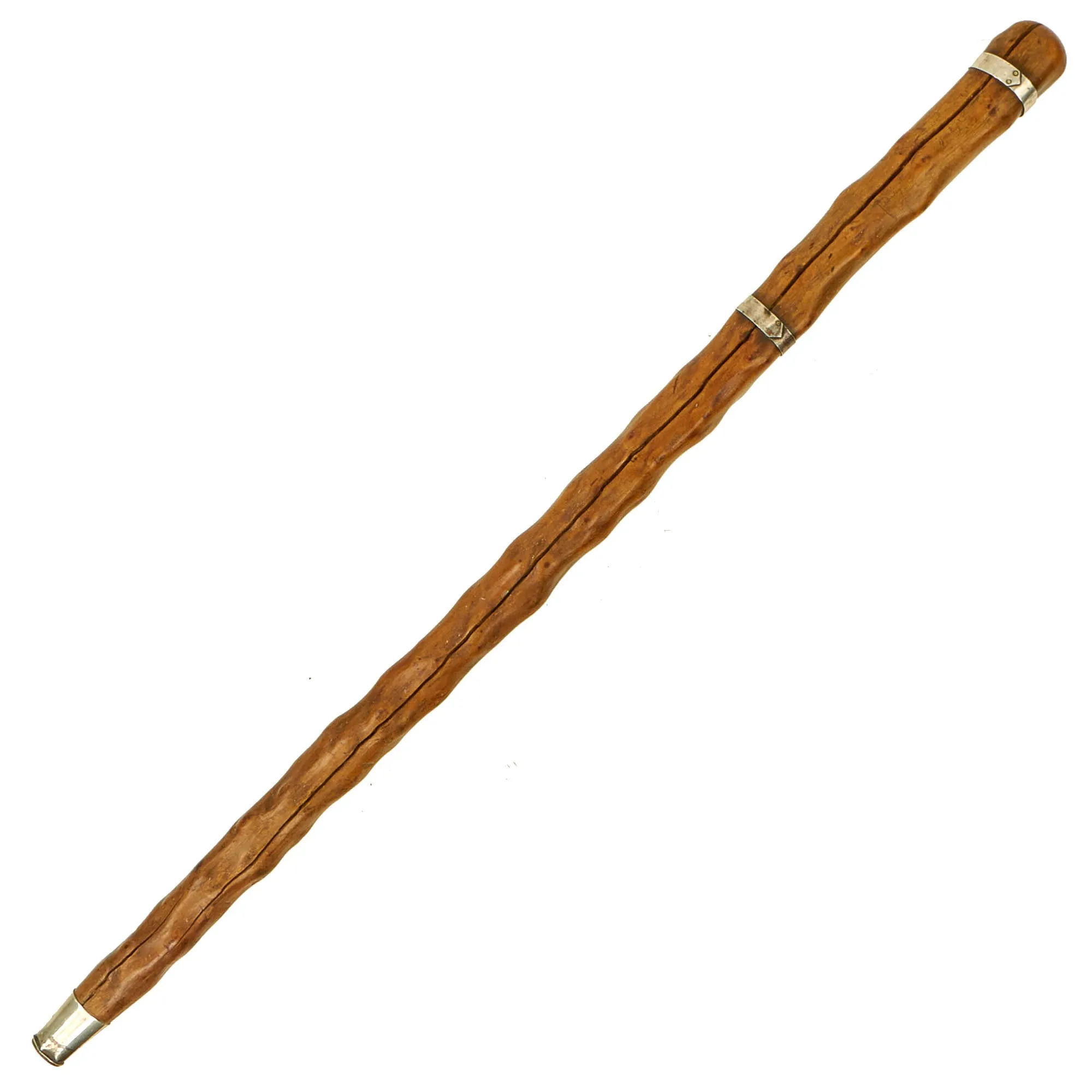Original Item: Only One Available. Now this is a beautiful memento from the mid to late 19th century. The walking stick the belonged to Admiral Sir William Robert Kennedy GCB, a Royal Navy Officer who went on to serve as Commander-in-Chief, The Nore. The Commander-in-Chief, The Nore, was an operational commander of the Royal Navy. His subordinate units, establishments, and staff were sometimes informally known as the Nore Station or Nore Command. The Nore is a sandbank at the mouth of the Thames Estuary and River Medway.
The walking stick measures 35” in total length and is made of knobby hard wood with silver adornments. The top silver band reads as W.R. KENNEDY with the lower band saying ROYAL NAVY. The bottom of the stick has a lovely silver ferrule with an unidentified coin dating 1870.
The overall condition is quite nice though there is a crack running the length of the stick. It is our belief that this was used well before the silvered bands were attached and once the wook cracked, Admiral Kennedy had the bands made to keep the stick in one piece, most likely due to sentimental reasons.
A great example of a named Royal Navy Admiral’s walking stick. Comes more than ready for further research and display.
Admiral Sir William Robert Kennedy GCB
Born in Naples, Italy where his father John Kennedy was the British chargé d'affaires, Kennedy joined the Royal Navy in 1851 and served with the Naval Brigade during the Crimean War. He was present at the bombardment of Canton in 1856, at the Battle of Fatshan Creek in 1857 and at the attack on the Peiho Forts in 1858 during the Second Opium War.
As a lieutenant he next was appointed to the sloop Wasp and on the journey to Cape of Good Hope he jumped overboard to rescue a man that had fallen in; he was awarded a silver medal by the Royal Humane Society. He later sailed on the Narcissus and Victoria, the mediterranean flagship.
Promoted to commander in 1867, he commanded the Vestal on the North American station and then the Reindeer in the Pacific. From 1879 to 1891 he commanded the Druid and was senior officer on the Newfoundland coast. He then commanded a coast-guard ship at Queensferry and then on to the Ruby as senior officer on the south-east coast of South America. In 1889 he was promoted to rear-admiral and from 1892 to 1895 and was commander in-chief in the East Indies. Promoted to vice-admiral in 1896 he was appointed commander-in-chief of the Nore in 1900 and was soon promoted to admiral.




